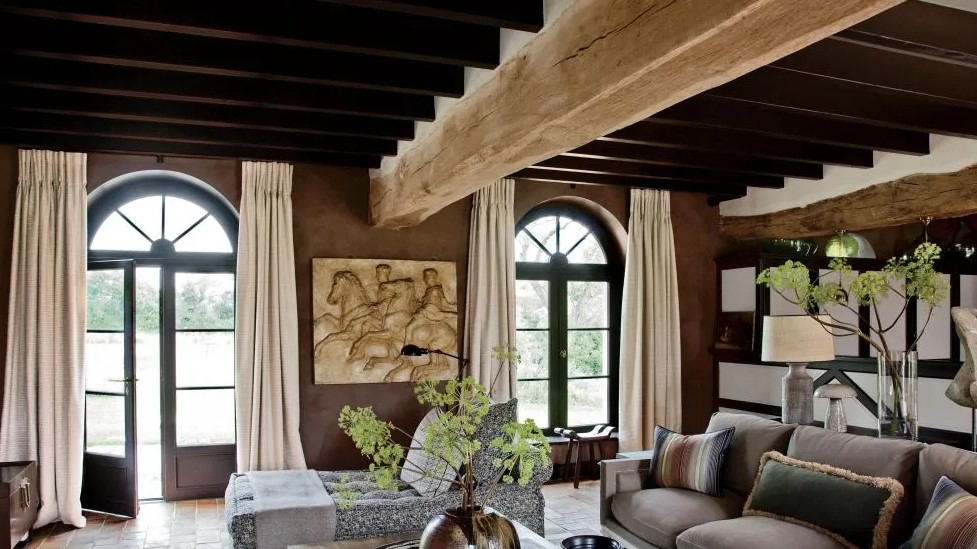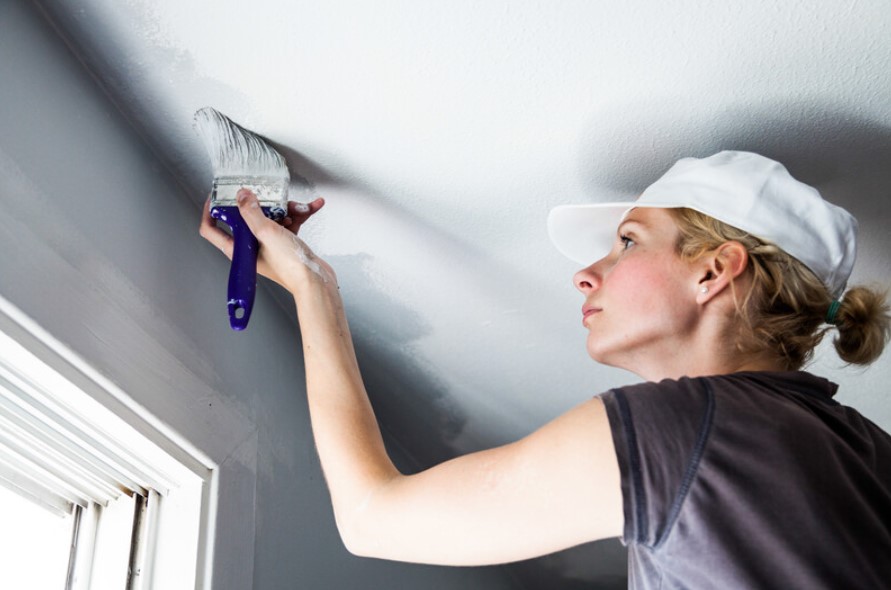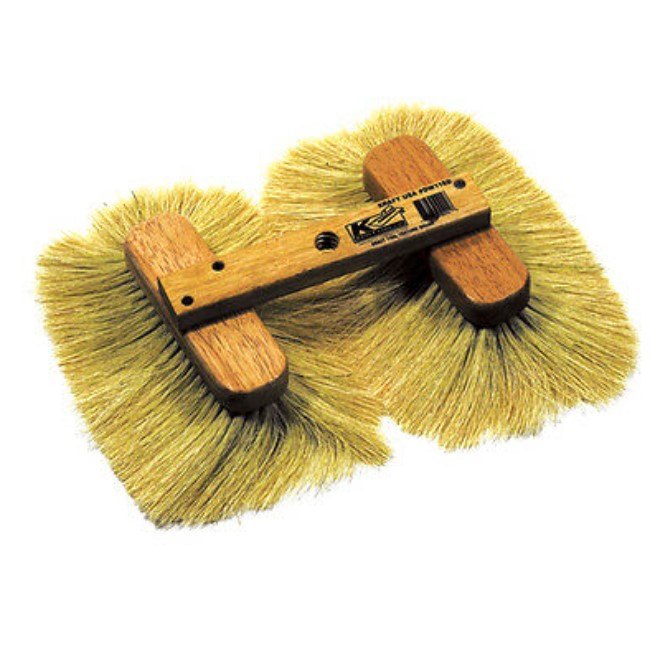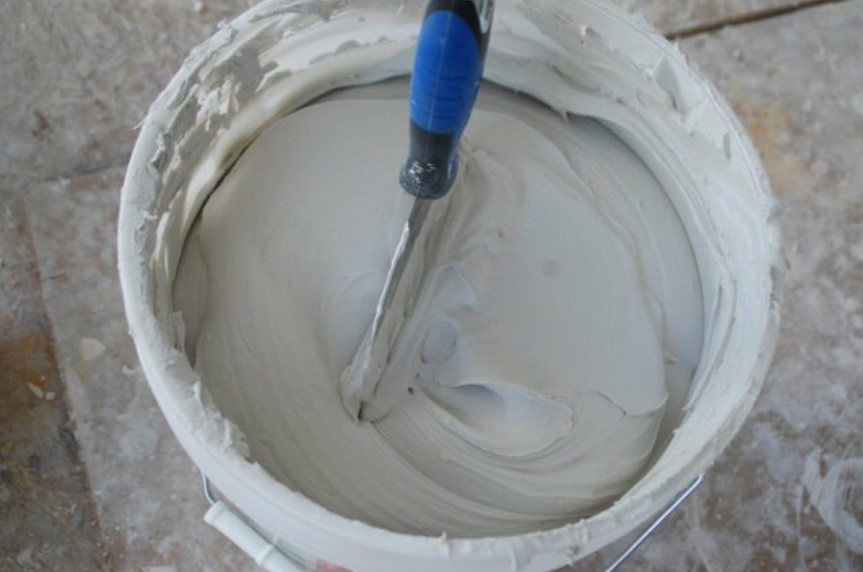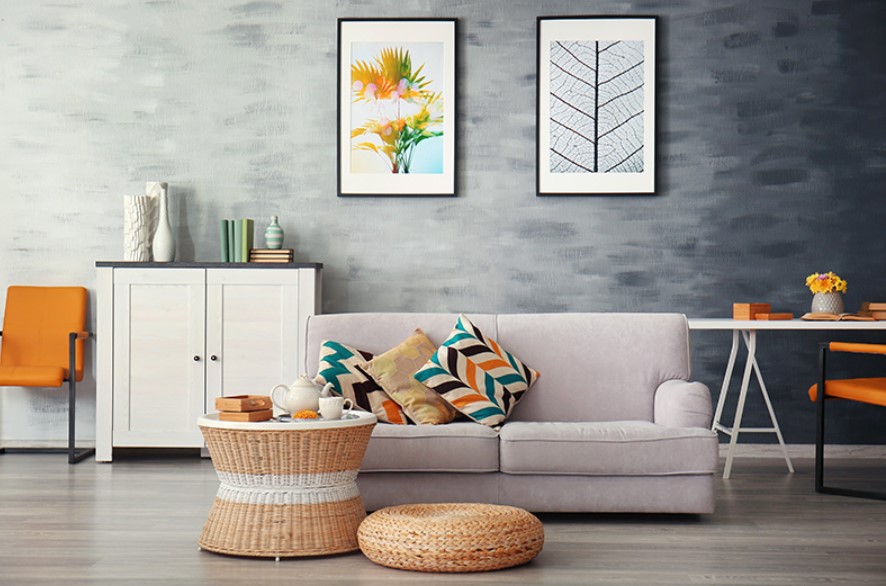Slap brushing, also known as How do you make a crow’s foot texturing How do you make a crow’s foot texturing, involves filling a brush with drywall mud and literally “slapping” it on the walls. This method creates hardened ridges and valleys of drywall mud on your wall that, when painted, look like crow’s footprints.
What, after all, is the texture of crow’s feet?
Slap Brush Texture Is Also Known as Crows Feet or Stomp Texture Slap brush texture, also known as crows foot, stomp brush, or stipple, is a fan-like or sunburst effect get to create through the fanned-out bristles of the texture brush and is easy to make on drywall surfaces using basic drywall compound, or “mud.”
Except for the reasons stated above, why are ceilings textured?
The texturing is very effective at hiding flaws. It aids in the reduction of echo in a room. If you’ve ever chatted in a room before and after carpeting, you’ll notice a significant change in echoes. It’s like carpeting the ceiling with an acoustic finish.
How do you skim coat a ceiling in this manner?
Skim coating is the technique of smoothing out rough wall and ceiling surfaces with a very thin layer of joint compound or mud. This might be as simple as applying a single coat of mud to disguise small flaws or as complex as applying numerous applications to create a smooth, finished surface.
When to Make a Drywall Slap Brush Texture?
The Slap Brush Texture is also known as Crow’s Feet Texturing or Stomp Texture. Slap paintbrush pattern, also referred to as crow’s foot, stomp brush, or stipple, is a simple wall pattern that could be achieved using basic drywall paste or “mud.” The fanned-out bristles of the texture brush provide a fan-like or sunburst appearance in the finished texture.
The process is simple, and varied textures may indeed achieve the layering of boot design somewhat, changing the viscosity of the mud, using a different brush that leaves a distinct imprint. The depth of the ridges in the joint compound is generally determined by the stiffness of the bristles.
You’ll want the Following Supplies.
Premixed, all-purpose, lightweight drywall compound available in buckets is the easiest form of drywall mud to use. Pick up an extra 5-gallon bucket to thin the compound by mixing it with a little water. You may use a power drill and a tiny mixing paddle to speed up the mixing process, or you can just mix the mud by hand.
Texture Factors for Slap Brushes:
Stomp textures are designed to seem like hand-applied plaster textures that are typically found on ceilings in older homes. This is a welcome difference from the typical spray-on textures found in modern drywalled homes, such as orange peel or knockdown effects.
Although, with a stomp texture, it’s difficult to overdo it and apply too much mud, resulting in a heavy, dense texture. The texture can contain dripping peaks that dry out to look like stalactites in severe circumstances. A stalactite ceiling is not something you want. For optimal results, keep the mud thin and apply it in a smooth, equal layer.
Spend a few days studying on a scrap piece of drywall, cardboard, or plywood to get a feel for the process. By scraping off the textured mud before it hardens, you can practice over and over.
What is the key to making a slap brush texture?
A slap brush texture could be focused on new bare drywall or painted drywall or plaster, and all debris, dust, and oils get remove from painted surfaces before applying the texture. If the paint is glossy, consider sanding it to scuff it up or lightly etching it with trisodium phosphate (TSP) to help the drywall mud stick.
Fill an empty bucket halfway with drywall compound, then add a little amount of water and thoroughly mix to produce the consistency of a thick yet rollable paste. Using an extension pole, prepare a paint roller. On the slap brush, you can optionally utilize an extension pole if desired. Dip the roller into the thinned compound and completely coat it. Leave any leftover clay to drop off.
To finish the surface texture, reverse the procedure. Before rolling out the next area, do not allow the textured mud to dry. Fresh mud will attach to dried mud. However, blending the textures between the dry and fresh parts is challenging. Allow at least 24 hours for the surface to cure before priming and painting.
Without a Brush, How Do You Create a Crow’s Foot Texture on Walls?
Slap brushing, also known as crow’s foot texturing, involves filling a brush with drywall mud and literally “slapping” it on the walls. This method creates hardened ridges and valleys of drywall mud on your wall that, when painted, look like crow’s footprints. Brushing is still the most common way, and a recent alternative involves using a pre-moulded roller to make the same designs. The roller method will work just as well as the brush method and will save you a lot of time.
Dropcloths are placing on the flooring where the walls will be textured. If at all possible, remove all of the furniture from the room. Cover the furniture with drop cloths or tarps if it can’t be relocated. In a bucket, mix 1 part drywall compound with five parts fresh water. To make a smooth, creamy concoction, combine all of the ingredients in a mixing bowl. You want your solution to have the consistency of sour cream or a thick sauce.
Fill the bucket with water and drywall compound until it hits this consistency. Fill a roller pan halfway with the batter. The crow’s foot roller can dip in the mixture until it is thoroughly covered. To remove any extra drywall solution, roll the roller back over the ridges in the pan.
Apply the mixture to the wall with a rolling pin. Work in small 4-foot-by-4-foot sections at a time, completely covering each one before going on to the next. Begin at the top and work your way down the wall. Reload the roller with drywall mixture and finish the area when it is no longer leaving texture on the wall.
Well, how Paint a Crow’s Foot Ceiling with a Stipple Brush?
A crow’s foot ceiling can be used to conceal minor cracks and other drywall flaws. This design is also known as “stomped” or “slap-brush.” After completing all of the preparation stages, paint a pattern on the ceiling with a stipple brush dipped in drywall. Before you begin the project, practice making patterns with the stipple brush on a scrap piece of plywood.
Prepare the Area
This is going to be a dirty project. Remove everything from the room that you can. Cover the remaining areas with plastic sheeting secured with painter’s tape. Any drywall that drips down the walls get easily remove once it dries, but it’s usually more convenient to simply cover the walls.
Masking equipment can be rented to make the masking process easier. Turn off the electricity to any overhead lights or ceiling fans at the main breaker box. Remove the fan’s canopy and the light’s cover. Anything else should wrapping in plastic and taped shut.
Make the ceiling ready.
Any stains or cracks in the ceiling will be seen through the glass. Joint compounds are used to fill in divots and cracks. After applying the compound to the damaged area with a putty knife, feather it around the borders to blend it in with the existing ceiling. The joint compound are applied in one colour and is dry until it turns white. After the compound has dried, apply a primer design.
Mix the Drywall Mud
To make the Drywall Mud, combine the following ingredients in a mixing bowl. Putting the majority of a bag of drywall mud into a mixing container is the easiest way to mix it. Slowly pour in water while stirring the mud with a mixing paddle attached to a drill. The consistency of the mud should be similar to thin pancake batter. If the mud is excessively thick, sharp spikes will protrude from the surface.
The practice board will help you get a sense of the proper consistency for the look you want to achieve with the stipple brush. Allow the mud to absorb more water by allowing it to settle for a bit. After that, give it one last stir, and you’re ready to use it.
Use the Crow’s Foot Pattern as follows:
Applying the mud to the ceiling is simple with a long-handled paint roller. Shake off some of the extra mud from the roller by dipping it into the bucket. Wipe the excess back into the bucket as you lift the roller out of the bucket. Apply mud to the ceiling in a 1/8-inch thick layer, starting in one of the corn.
Continue dipping the roller in the paint and rolling across the ceiling until a small piece gets cover. Let the pattern-making begin by dampening your long-handled stipple brush with water. Pull the brush away from the damp muck by pressing it into it. After a half-turn, press the brush unto the musk next to the first impression.
Continue stomping the crow’s foot texturing pattern with the stipple brush until the portion is complete. As you go, you’ll see that you may spread the mud for one section then stomp the preceding section as it’s forming up. Another alternative is to apply the mud with a partner while you work on the stipple brush pattern.
5 Tips for Texturing Crows Foot Walls
Crows foot texturing, also known as slap brush or panda paws texturing, is a simple but messy technique. Texturing your ceiling are utilize to disguise flaws in the drywall as well as provide depth and interest to a flat, lifeless ceiling.
Make Space for Texturing
Because of the messiness of this technique, it’s vital to remove as much furniture as possible from the room you’re working in. Remove any wall hangings and cover any fixtures before covering your floors with heavy plastic. The base of ceiling light fixtures is cover using painter’s tape.
Drywall Compound Mixing
To mix the drywall compound, you’ll need at least 5 gallons and an empty 5-gallon bucket. Transfer about half of the drywall compound into the empty bucket to ensure a uniform mix, then top off the compound with 20 oz of water in both buckets.
Fill an empty paint tray halfway with your drywall compound mixture. Connect the frame to a ling painter’s pole with a medium-sized nap paint roller to reach the ceiling. Start in a corner and repeal and forth from the wall to the outside. The drywall compound should be applied just thick enough to achieve a good texture pattern without dripping into your ceiling. If you’re the one to join with, only cover a 6×6-foot section at a time. This keeps the drywall compound from drying out before stomping in the texture.
Texturing:
After texturing, use steady pressure during kneading to achieve a more uniform look. Attach your crow’s foot texturing brush to the end of your painter’s pole once you’ve finished installing the drywall. Twist your pole to the right and back to the left as you drive the brush straight up into the wet compound.
Throughout the process of texturing your ceiling, stomp, and twist in this pattern. A forceful stomp and twisting action give you’re texturing a more even and authentic-looking pattern.
Rolling without Texturing:
You can apply the compound directly to your ceiling without rolling if you want a more natural-looking, uneven texture. Dip the texture brush into the prepared compound and apply it to the ceiling with the brush right away.
Repeat the stamping technique mentioned in the previous section. Before beginning this job, test both application methods on a scrap sheet of drywall to see which you prefer.
Texture Brush for Kraft Double Crows Foot:
Drywall applies joint compound in a multiple crow’s foot texturing. This is one of the most popular of all hand-applied drywall textures, and it is frequently pulling down. White Tampico fibre bristles are placing in a hardwood block measuring 1-3/8 “x6-3/8” in the Double Crows Foot Drywall Texture Brush.
3/4″ coarse male thread can insert into the hole drilled in the centre of the connecting block. To reach high ceilings, just screw in a painter’s extension pole. Crows Feet, Crows Foot, Slapbrush or Slap Brush, Panda Paw, and Stomped Ceiling are examples of drywall texture patterns.
Crow’s Feet Texture Removal
We began by using a secondary bedroom as a “test room.” We’d spray an area, wait a few minutes, and then scrape it clean. The difficulty was that this texture was so thick that we had to scrape through two layers instead of simply one to get it to the sheetrock. Spray, set, scrape… spray, set.
It took a few days and a lot of human labour to get everything out, but we did it! And every surface of the home was covered in a thin coating of dust! Guys, it was a shambles. We soon realized, however, that we didn’t need to get all the way to the sheetrock.
It was not only tough and time-consuming, but it also did not produce the best results. It’s one of the reasons why contractors texturize ceilings: to hide flaws. It’s not easy to achieve those perfectly smooth ceilings. Thus they save time. This is the process we’ve settled on after going through it room by room. It doesn’t save as much time as some of the other approaches we’ve explored, but it produces the best outcomes with the least amount of effort.
FAQs about Crows Feet Texturing
What is the best way to use a crow’s foot texture roller?
HOW TO USE:
Thin drywall mud to the consistency of pancake batter, pour into a paint roller tray, roll mud onto the wall with a heavy nap roller, then roll a damp texture roller across the wet mud in a symmetrical or random pattern, depending on the desired aesthetic.
What’s the best way to hang crow’s feet from the ceiling?
The Crow’s Foot Pattern should be used. Apply mud to the ceiling in a 1/8-inch thick layer, starting in one of the corners. Continue dipping the roller in the paint and rolling across the ceiling until a small piece gets cover. Dampen your long-handled stipple brush with some water, and let the pattern-making begin.
What is the purpose of a crow’s foot tool?
Crowfoot wrenches are like open-end sockets that are useful for reaching around corners. They function in places where standard 6pt and 12pt sockets and wrenches just won’t fit. For greater reach, the crowfoot wrench is shown connected to a ratchet with a short extension.
What is the most popular texture for a wall?
The following are the most common:
Peel of an orange.
Knockdown.
Smooth.
Swirl.
It’s the old world.
What is the best way to use a crow’s foot brush?
The Crow’s Foot Pattern get used. Apply mud to the ceiling in a 1/8-inch thick layer, starting in one of the corners. Continue dipping the roller in the paint and rolling across the ceiling until a small piece gets cover. Let the pattern-making begin by dampening your long-handled stipple brush with water.
How do you use a roller to stipple a ceiling?
Paint the ceiling with thinned joint compound using a heavy-nap roller. Work in 6 foot by 6-foot pieces. Apply the joint compound in one direction and then across the grain of the previous application. Keep the joint compound loaded on the roller.
